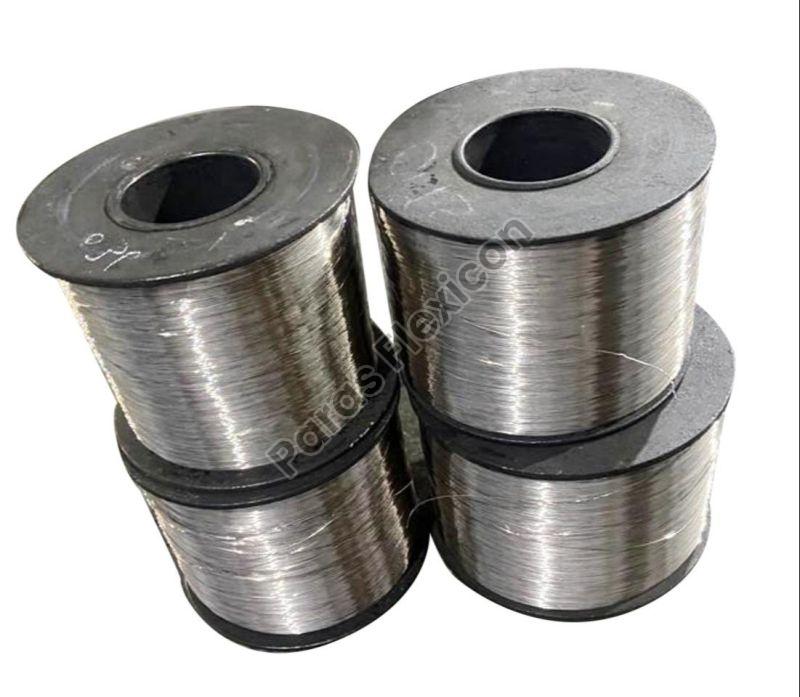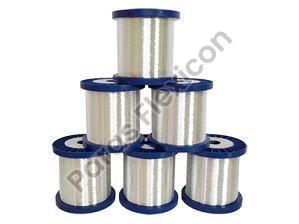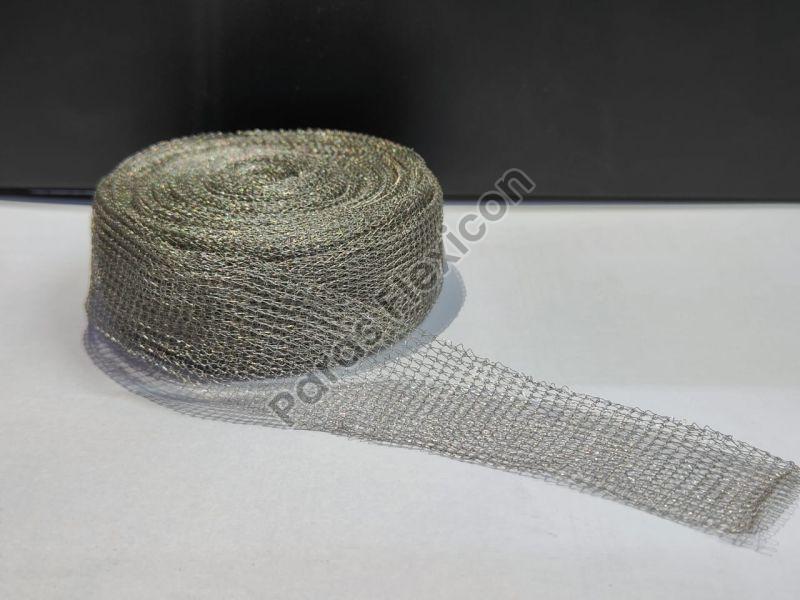Ramanagara, Karnataka
- GST NO. : 29AAACP8228L1ZY
Metal and Alloy Wires
Leading Manufacturers, Exporters and Wholesaler of Nickel Plated Copper Wire, Silver Plated Copper Wire and Tin Coated Copper Wire from Ramanagara.
| Business Type | Manufacturer, Exporter, Supplier |
| Feature | Excellent Corrosive Resistance,Superb Thermal Resistance,Shiny & Bright Surface |
| Application | Electrical Appliance |
| Wire Gauge | 5-10 |
| Conductor Type | Stranded |
| Material | ETP Grade Copper, Vale Inco Nickel |
| Conductor Material | Pure Copper (Annealed / Hard) |
| Plating Material | Electroplated Nickel |
| Nickel Coating Thickness | Typically 1 to 5 microns (custom on request) |
| Diameter Range | 0.05 mm to 2.5 mm |
| Operating Temperature | Up to 750°C |
| Conductivity | High (slightly lower than bare copper) |
| Packaging Type | Spools, Coils, or Customized Packs |
Nickel Plated Copper Wire combines the high electrical conductivity of copper with the corrosion and heat resistance of nickel. A uniform nickel coating is electroplated over pure copper wire, enhancing its performance in high-temperature and oxidizing environments. This wire is ideal for applications requiring long-term stability, solderability, and resistance to tarnish and chemical attack.
Key Features:
Excellent oxidation and corrosion resistance
Maintains performance at elevated temperatures
Good solderability and surface stability
Extended shelf life and resistance to tarnish
Compatible with high-frequency and high-voltage applications
Applications:
Heating elements and resistance coils
Lead wires for electronic components
Aerospace and defense wiring
High-temperature cable assemblies
Battery and fuel cell interconnects
EMI/RFI shielding braids and flexible connectors
| Business Type | Exporter, Supplier, Trader |
| Country of Origin | India |
| Packaging Type | Rolls And Bundles |
| Conductor Material | Pure Copper (Annealed or Hard Drawn),Copper |
| Plating Material | Electroplated Silver |
| Plating Thickness | Typically 1 to 10 microns (custom available) |
| Wire Diameter Range | 0.05 mm to 2.5 mm |
| Conductivity | Excellent (very low resistance) |
| Operating Temperature | Up to 200°C continuous |
| Standards Compliance | RoHS compliant (upon request) |
| Packaging Options | Spools, Reels, Coils, Custom Packing |
Silver Plated Copper Wire combines the high electrical conductivity of copper with the superior surface conductivity, thermal stability, and corrosion resistance of silver. A thin, uniform layer of silver is electroplated over a pure copper core, resulting in a wire that performs exceptionally well in high-frequency, high-temperature, and corrosive environments.
Key Features:
Outstanding surface conductivity for signal transmission
Tarnish-resistant and corrosion-resistant finish
Solderable surface ideal for electronic applications
Stable performance under thermal cycling
Longer shelf life and enhanced durability
Applications:
High-frequency signal and RF cables
Military and aerospace wiring systems
Medical device components
Precision electronics and connectors
Power transmission in harsh or high-performance environments
EMI/RFI shielding and grounding systems
| Business Type | Manufacturer, Exporter, Supplier |
| Packaging Type | Spools,Reels,Or Coils (as Per Requirement) |
| Corrosion Resistance | Excellent, especially in humid conditions,Yes |
| Conductor Material | Pure Copper (Annealed Or Hard Drawn) |
| Color | Copper Color |
| Type | Copper Coated Wires |
| Country of Origin | India |
| Diameter | 0.02 - 1 Mm |
| Wire Gauge | 5-10 |
| Coating Material | Electroplated Tin |
| Plating Thickness | 3 to 10 microns (custom on request) |
| Wire Diameter Range | 0.05 mm to 2.5 mm |
| Conductivity | High (nearly same as bare copper) |
| Operating Temperature | Up to 150°C continuous |
Tin Coated Copper Wire is a high-conductivity copper wire electroplated with a uniform layer of tin to enhance corrosion resistance and solderability. The tin coating acts as a protective layer against oxidation, extending the wire's shelf life and making it ideal for electrical and electronic applications, especially in humid or corrosive environments.
Key Features:
Enhanced corrosion protection
Easy to solder, even after long storage
Stable electrical performance
Resistant to moisture and oxidation
Cost-effective alternative to silver coating
Applications:
Wiring in electrical panels and control systems
Automotive harnesses and battery cables
PCB jumpers and terminals
Telecommunication and data cables
Industrial equipment and appliances
EMI shielding braids and flexible connectors




